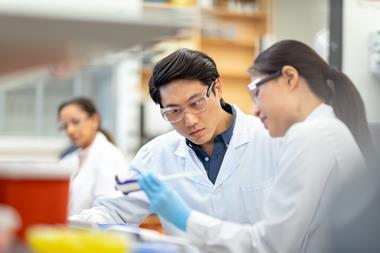The Monell Chemical Sciences Center offers a highly multidisciplinary research environment, as Matt Brown discovers
The Monell Chemical Sciences Center offers a highly multidisciplinary research environment, as Matt Brown discovers

There are many institutions devoted to vision and hearing research but far less attention is paid to the so-called ’chemical senses’ of taste and smell. The not-for-profit Monell Chemical Senses Center in Pennsylvania, US, was a pioneer in this respect. Over 40 years, its staff have developed a taste for interdisciplinary research. Today, Monell remains the world’s only independent, not-for-profit research institute dedicated to basic sensory research.
Monell was established at the University of Pennsylvania in 1968 following an initial pledge of $1 million dollars from the Ambrose Monell Foundation. At the time, very little was understood about the mechanisms of taste and smell. The centre separated from the university in 1978 but the two institutions still enjoy close collaborative ties.
Gary Beauchamp has worked at Monell for nearly 40 years and is the current director. He joined in 1971 as a postdoc. ’There were only about 12 people here back then,’ he says. ’I’d only intended to stick around for a few years before getting a ’real job’ but one thing led to another and I began to make my way up the career ladder.’ When the original founder died in 1990, Beauchamp was asked to take his place.
Science sharing
Scientists at the Monell Center work in a multidisciplinary environment that encourages collaboration. There are no departments and no divisions along subject lines. Around 25 principal investigators (PIs) set the research agenda. They are supported by a further 50 postdoctoral fellows and research associates from many different backgrounds. Psychologists and public health experts work alongside neuroscientists, geneticists and chemists, and any given scientist might be working on several projects at once. ’Virtually nobody here sits working alone on their own thing,’ says Beauchamp. ’The chemical senses entail, by their definition, biologists, chemists, and psychologists working together. You can’t do any work on the senses without having all those aspects involved. We therefore recruit from all fields but researchers are perforce made to become interdisciplinary.’
Of course, there are challenges with this approach. ’The hardest part is communicating across disciplines,’ says George Preti, a PI at Monell researching mammalian chemical communication. But he enjoys the benefits. ’As a chemist, I’ve learned a lot about disciplines such as neuroscience that I wouldn’t have otherwise known. I also have the liberty to work with human subjects. My work has drawn on many referrals from dentists and dermatologists with regard to my research into body odour. Not many organic chemists get the chance to work in this almost-clinical setting.’
Monell money
Monell benefits from diverse funding sources. Around half the money comes from government grants, usually from the National Institutes of Health. A further 35 per cent is drawn from a corporate sponsorship programme. Monell also partners on collaborative research projects with companies - normally the food, fragrance or other sense-orientated industries. ’We are independent from, but supported by, industry,’ says Beauchamp, pointing out that Monell scientists retain the right to publish any useful research that comes out of a collaboration. Remaining funding comes from the original Monell Foundation, and by private donation.
Over 300 PhD-level scientists have been trained at Monell, which also runs a high school and college internship programme, to encourage a general interest in science and research.
The centre has contributed to many advances in our understanding of taste, smell and other chemosensory systems. Important work includes the identification of genetic and environmental factors contributing to sensory perception, the importance of pheromones in mammals, and the role played by the chemical senses in nutrition. The centre recently raised enough capital to open new facilities with state-of-the-art laboratory space and new faculty positions for its integrated molecular biology and human sensory perception research programmes.
Beauchamp is fiercely proud of Monell’s achievements. ’We’ve grown from nothing to an established and respected brand. We do work that probably couldn’t be done anywhere else.’
Facts and figures
Number of scientists: more than 60
Chemists employed: organic chemists, biochemists, chemical ecologists and others
Location: Philadelphia, Pennsylvania, US
Major research areas
Sensations and perception, neuroscience and molecular biology, environmental and occupational health, nutrition and appetite, chemical ecology and communication, health and wellbeing
Funding
Competitive government grants, corporate sponsors, private donations, foundation sources
Matt Brown is a freelance writer based in London, UK












No comments yet